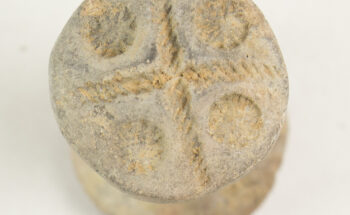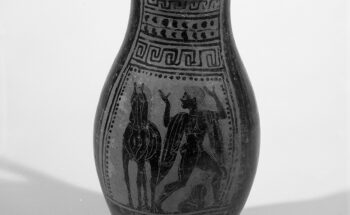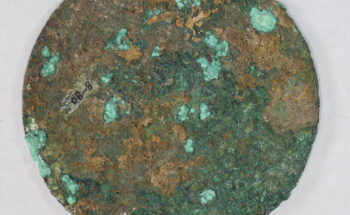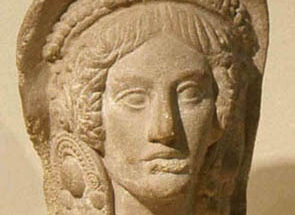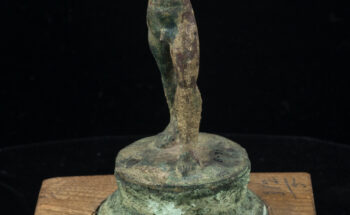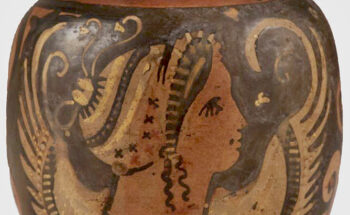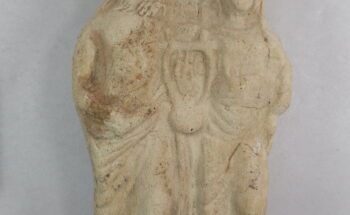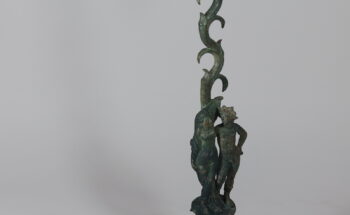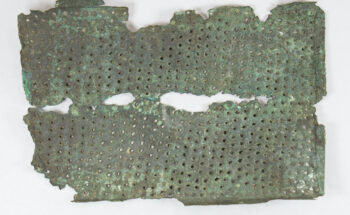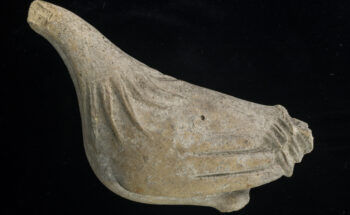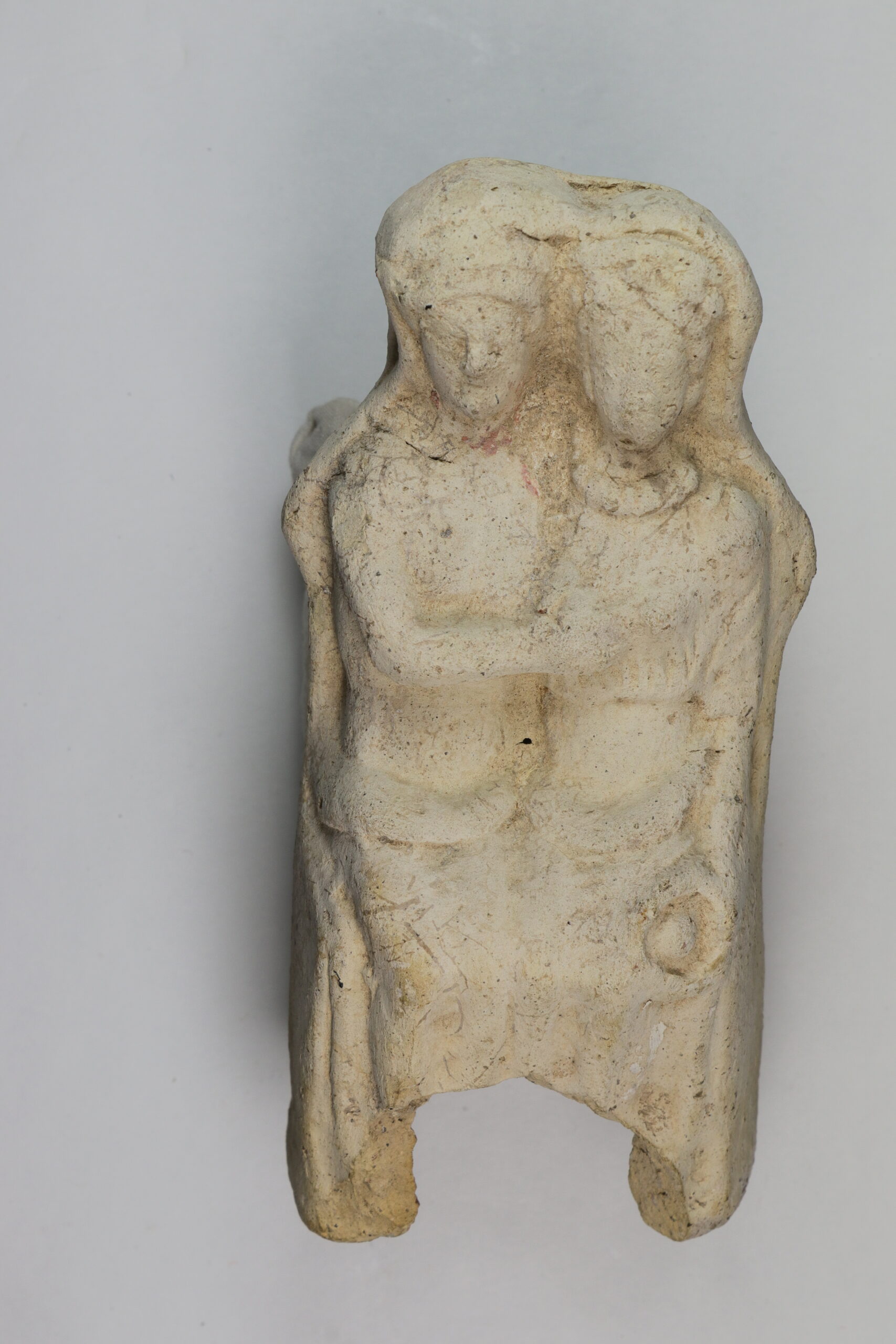Oinochoe (olpe)
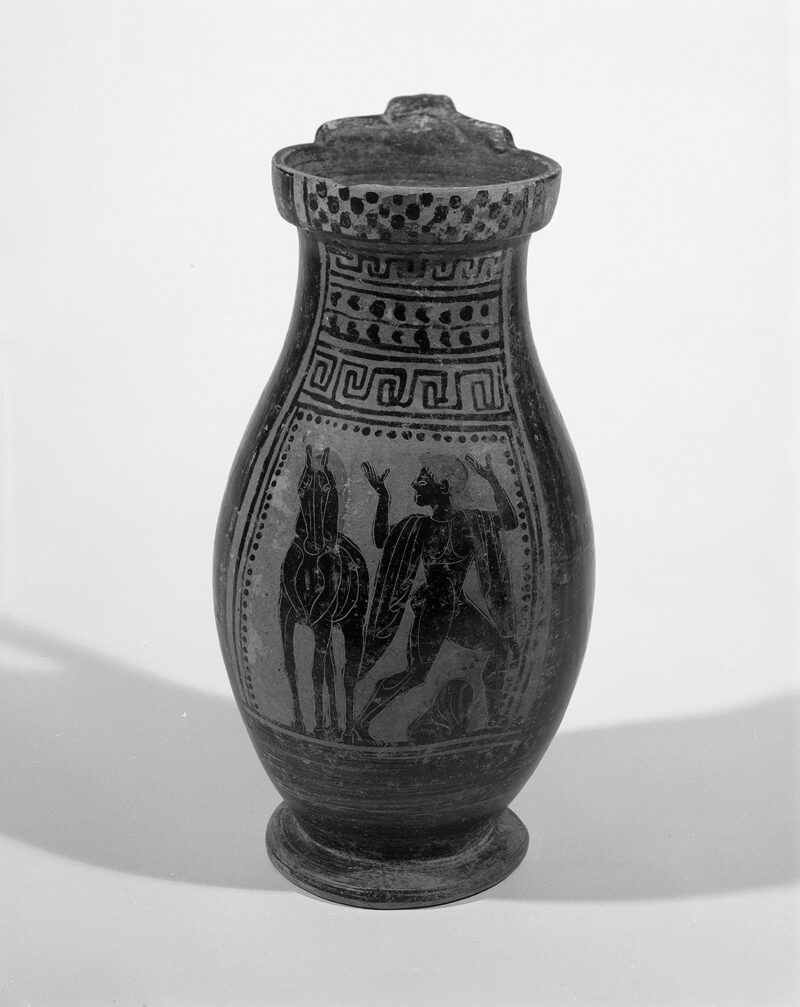
Etruscan black-figure olpe with painted designs, a dancer, and a front-facing horse. Orvieto, Umbria. 650-480 BCE. 8-920
This black-figure wine jug shows a nude dancer with his arms raised. Although his body is oriented to the right, he looks backwards at a horse behind him. Between the dancer’s legs is a boulder, a small detail that serves to situate the dancer in space and give the impression of a landscape.
In his essay “Sketches of Etruscan Places” English poet and novelist D.H. Lawrence (1885-1930) described Etruscan dancing as: “The natural flowering of life! It is not so easy for human being as it sounds. Behind all the Etruscan liveliness was a religion of life… Behind all the dancing was a vision, and even a science of life, a conception of the universe and man’s place in the universe which made men live to the depth of their capacity.”
At a time when classical scholars dismissed the Etruscans as an inferior people, Lawrence’s reception of Etruscan art gave agency back to a voiceless people, since most of their language has not survived. Though he provides a somewhat romanticized account of the Etruscans, Lawrence’s writing provides a unique perspective on Etruscan art and encourages his readers to look, linger, and enjoy.
-Chase
- Return to the main page of the exhibit
- Or follow one of the links below to continue.


